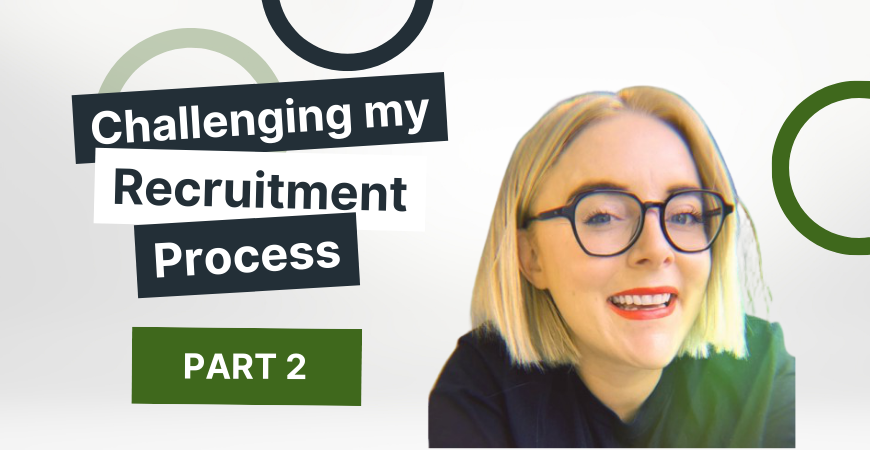(Psst.. read the first part of the series here if you haven’t)
Here’s the second part of how I’ve challenged my recruitment process… Putting together the recruitment strategy!
This was crucial to me finding the right people because it’s all well and good to want to do things differently but without a plan I know that my brain will always revert back to what it knows and is used to. Which is boring.
1. Putting pen to paper.
OR, in my case, creating a OneNote document with my ideas and process. I needed to write/type it out so that I could get the ideas out of my head and start making them actionable. I also ran the document past someone in our Diversity team to get their input from that perspective. I wanted to make sure my plan was truly going to be fair and equitable to anyone with the right skills, and not just people with recruitment experience.
2. Creating the advert.
I spent lots of time on this because I wanted it to reflect my style, the values of the organisation, and attract the right people. Typically at the candidate sourcing stage, I would have a plan to do some proactive stuff (networking, headhunting etc) but we have a rule that we advertise internally first, so that was my initial plan of attraction.
I wanted to make sure the advert content was inclusive, and highly encouraged people from minority backgrounds to apply. I ran the content through Gender Decoder and ensured I included the content in the brief that I sent to our diversity team for review.
One other thing that I did was include information on the assessment process, and what candidates could expect to come up against if they apply. This is something I read about recently, and thought was such a great idea! As someone with anxiety, particularly when being interviewed, I thought about how nice it would be if I had that information up front so I could better prepare.
3. Creating an application questionnaire.
I added a questionnaire to the application form, in lieu of a cover letter. I assumed I would get a fair bit of interest in the role as I was making it really clear that previous recruitment experience wasn’t needed. Adding a short, easy questionnaire is a good way to help with screening when applications close. The questions I included were aligned to our company values and their thoughts on what makes a good candidate experience based on their experience as a candidate!
4. Getting the right assessment team together.
I don’t know if this is just a govvie thing, but we call it a “recruitment panel”. I needed to make sure that the person I had on my panel had a vested interest in finding the right person, along with the right mindset as me in terms of creative thinking and strategy. This can sometimes be someone in your direct team, but often the best person to have on a recruitment panel with you is someone from a different part of the business who can offer some diversity of thought to the process.
5. Designing the assessment tools.
This part was fun! Challenging to not include a behavioural question like I’ve been conditioned to do in the past, but super fun thinking outside the box about what else I could do instead. After quickly screening the application questionnaire, followed by a quick phone screen, we decided to ask shortlisted candidates to put together a 2-paragraph LinkedIn post about one of our jobs. We sent them the PD, and asked them to consider our tone of voice when putting the content together. The challenge was to see if they could adapt to our tone of voice and writing style.
We scored those responses and then invited the final shortlisted candidates to a quick 30-minute hypothetical chat over Teams. The questions were all “what would you do if xxx happened” style, rather than “tell us about a time you did xxx specifically”.
6. Ensuring assessment tools align to the key capabilities required for the role.
This is something we always do, and our key capabilities are found on our PD’s – so it’s all information the candidates will have upfront. All questions and assessments we do are always aligned back to those and the inherent requirements of the role.
Recruitment has only just wrapped up, and so the proof will be in the pudding in 6-12 months when the newbies in the team have settled in. BUT I’m feeling super confident with our choices, and am confident that the approach I followed has found me the right people. Happy days 🙂







